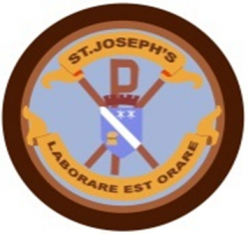Mrs Haig, our STEM ambassador, came to visit P7 to talk about career pathways into engineering. We asked lots of questions and were left feeling inspired.
Tag: Science
Changes – Changing Colour
P5G STEM Cornflour Slime
Yesterday (Tuesday 21st March) Primary 5 had a wonderful science STEM day and made cornflour slime. The children all enjoyed getting involved with the experiments and trying things out and following the instructions to make new things and to show changes in colour and changes in state.
Cornflour slime
The children found it quite tricky to mix the cornflour and water and had to work hard to combine the two using lots of muscle power.
Eventually, when the consistency was correct the pupils chose their preferred colour for the slime.
Results
- adding a little water didn’t work well and we had to add more
- cornflour and water mix to create a substance that is hard when you tap it and turns runny when you handle it.
- it looked gooey and squishy
- was hard to mix food colouring
P5G STEM Day
Primary 5 had a fabulous day today conducting a variety of experiments in class related to changes.
They looked at colour change and change in state.
3 experiments included:
- fizzy colours
- paper towel colour mixing
- cornflour slime.
The children completed science reports on each and came up with their predicitons for each experiment before conducting it.
The children had an excellent time participating in these experiments and worked together in small groups sharing ideas.
They then came up with their findings and conclusions for their reports.
Fizzy colours
Findings
- when the vinegar was added to the food colouring it made it go lighter
- paintbrushes didn’t work for adding the vinegar to bicarbonate of soda so we poured small amounts in.
- when the vinegar interacted with the bicarbonate of soda it erupted, puffed up, got bigger and fizzed up.
- we learned that it gave off a gas and that this gas was carbon dioxide.
- bicarbonate of soda = alkali
- vinegar = acid.
Paper Towel Colour Mixing
Findings
- the food colouring became lighter when water was mixed with it.
- the paper towel became soggy when inserted into coloured water
- water travelled up the paper towel because the paper towel soaked it up (absorbed it)
- the coloured water began to mix when they both moved up the paper towel to create the colour purple.
Tomorrow the children will finish their report on Cornflour slime and reflect on their findings.
Photos to follow of these fab experiments.
Fair to say that the children enjoyed their science day and will hopefully have more science experiments to report on.
Why did the Titanic sink?
Yesterday (Monday 20th March) Primary 5 were exploring these questions in some depth.
Firstly we came up with our own theories regarding the reasons(s) why the Titanic sank which included;
- the weight if it was balanced
- the mass and density of the Titanic made it float
- The turbines and propellers made it float by spinning
- it was made with enough density
- the funnels had air going out
- it was made of metal
- the shape of the metal allowed it to float
- there was a lot of air on the Titanic
- it was very spacious – air on board
- lots of hollow spaces
I am sure you will agree that Primary 5 really thought very hard at this and did very well at giving reasons and when questioned further were able to justify their reasons.
Today we had a guest in the class to help us answer this question and allowed us to have a deeper discussion and develop our understanding. They were all so engaged in the lesson and the questions that the class were asking were just fab!
Today we learned that the Titanic stayed afloat through buoyancy where the upward thrust of a force allowed it to float – when something is placed in water it will sink until it moves enough water to support it.
The reason the Titanic sank = it hit an iceberg and ripped a hole in its hull. water then poured into the hull and the ship became too heavy – there was not enough support or upward thrust to help it float.
Why did it sink diagonally and why did it snap?
- Think about a seesaw – more weight at one end will lift the other up, so one end of the Titanic came out of the water. The end that was in the water was filled with water and pulling the ship down. The end that was in the air did not have the support from the water and so became heavy (because it was made of metal) and therefore snapped.
Primary 5 really did a brilliant job today of digging deeper into these questions and have developed a good understanding of them now. Their questioning and reasoning was great!















































































